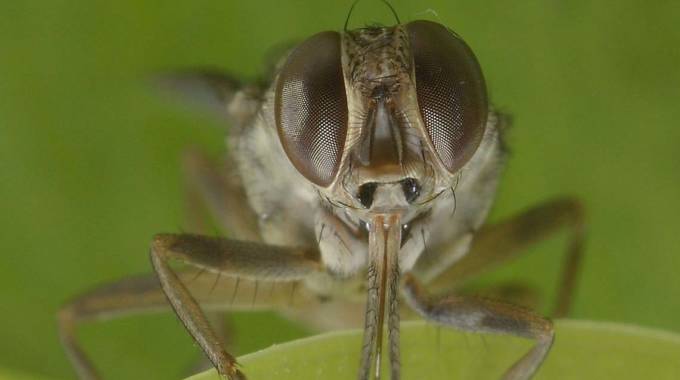
The Sunday Mail

Theseus Shambare
GOVERNMENT has successfully cleared tsetse flies in nearly all human settlements countrywide and reduced existence of the insects in wildlife areas by over 90 percent.
This is in line with the National Development Strategy (NDS1) goal for Zimbabwe to be declared a tsetse-free nation by 2024.
In previous years, tsetse flies have affected humans, killing and causing diseases affecting livestock, particularly in areas around the Zambezi Valley.
Addressing journalists during a media tour recently, National Director for the Department of Tsetse Control Services Dr William Shereni said they are working relentlessly to ensure all areas at risk of invasion continue under monitoring.
“At Independence 55 000 square kilometres were tsetse-infested and inhabitable by both human and livestock. However, with implementation of NDS1 by the Second Republic we have successfully reduced this area to 4 500 kilometres squared.
“If we have achieved so much, it means there are no excuses for not assuring a tsetse-free nation by 2024,” said Dr Shereni.
Tsetse fly refers to a fly of the genus Glossina, native to Africa, that feeds on human and animal blood; known primarily as a carrier of parasitic trypanosomes.
In Zimbabwe, there are two species known as Glossina pallidipes and Glossina morsitans-more commonly known as tsetse flies.
These insects are carriers of parasites that cause nagana, a wasting disease similar to human sleeping sickness which is transmitted when they bite animals to feed on their blood.
Dr Shereni said many cattle die of the disease, while plenty more have spontaneous abortions or their production of milk suffers.
The disease, he said, also makes them too weak to be used for ploughing or transport.
“Farmers had to buy costly medicine to prevent the infected animals from dying. Arable land was being wasted, farmers were losing money, and there was less work available for labourers. In addition, there was a chronic lack of dairy and meat products to eat and sell,” he said.
All this began to change in 2009, when Government-run Southern Tsetse Eradication Project (STEP) and partners started to carry out intensive activities to suppress the tsetse fly population.
These include spraying of pesticides, treating cattle with insecticides, frequent dipping, and erecting targets that attract and then kill the wild flies.
Recently, Permanent Secretary in the Ministry of Lands, Agriculture, Fisheries, Water and Rural Development, Dr John Basera, said Government has made great strides in implementing tsetse-control initiatives.
“Tsetse control is a success story in Zimbabwe as Gokwe North, Kariba, Hurungwe and Mbire districts have been erected with odour-baited targets to deal with possible remaining few flies and ensure no re-invasion,” said Dr Basera a fortnight ago.
He said tsetse has a negative economic impact, particularly on farmers.
“By the end of the year, we expect that all the farming areas will be free of tsetse flies. With the elimination of tsetse, farmers can freely do their farming without constraints of treating animals with drugs,” he said.



